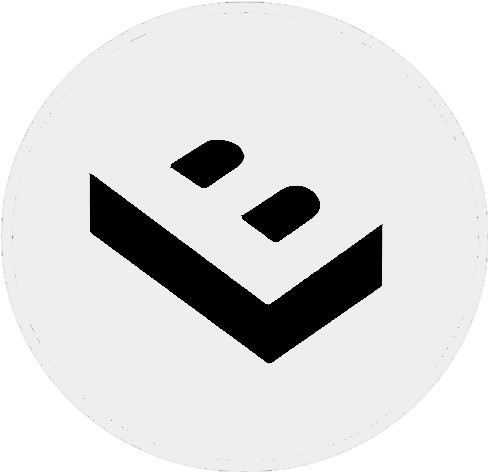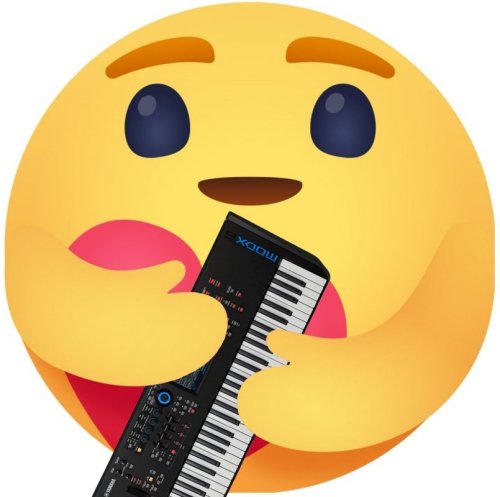
bigfish | 2 years ago | 15 comments | 8 likes | 1.1K views
chaver, songbaojin, irina1208 and 5 others like this!
Salute, BT fans!
I've been a loyal fan, user, admirer of BT products since 2008. Like many others here in community I was swept away by its simplicity, logics and almost boundless possibilities in 3D animation + never stopping development and enhancement of the product. Naturally, BT has become my app of choice when it comes to producing almost any kind of 3D animation, motion design, infographics and etc. (check out playlist of my 3D projects youtube.com... 90% of which are animated solely with BT)
But as my working experience expanded, I realized that 3D is cool by all means, but 2D is still something needful, a cornerstone of any kind of CGI. 2D projects are in no way less demand than 3D. Obviously I tried to fill that void in my professional expertise. Most of apps suitable for advanced 2D content production like Adobe Animate and AfterEffects seemed to me way too complicated and not quite user-friendly. Than it occurred to me that every now and then when working on some 3D, motion or infographics project I can’t help using some classic 2D technique in BT. So what if I can do more with the environment, tools and fx that BT provides us with. I started experimenting and I discovered that pretty much all I need to produce a decent level of 2D content is already at my disposal inside my favorite 3D app – BluffTitler.
Since then, I got tons of 2D projects done:
commercials youtu.be...
animated explainers youtu.be...
promo videos youtu.be...
presentations youtu.be...
cartoon series youtu.be...
music videos youtu.be...
etc. Check out full playlist of my 2D projects here youtube.com....
The fun part of using a 3D app like BT for purposes of 2D animation is that you get such features like parallax, pseudo 3D, 2.5D almost flat fx naturally, that is built-in. All you have to do is to smartly position your 2D images (flat objects) in 3D space. Such popular apps like Cinema4D and Blender implemented a separate unite for 2D animation just recently, whereas BT users have had them all the way!
Of cause, you need to have illustrations to animate them. Some gifted people can draw naturally, so it doesn’t take them much to draw illustration for a project with, say, a graphics drawing pad. I’m in no way an artist, but I use extensively vector graphics apps like CorelDraw and Adobe Illustrator. Plus, you can always rely on vector stock resources like vecteezy and freepik to get vector stuff for your illustrations even for free!
When taking part in some long-term, big projects as a member of a team, I usually get provided with graphics content, illustrations, scenes by a professional artist. So my part is to animate each scene, compose them in NLE, and finish up with sound design. For example, a cartoon series (youtube.com...) project I take part in as an animater, plus kiddy songs version (youtube.com...) – turned out to be a success: 2.4M views of the 1st song (youtu.be...)!!!
In brief, the pipeline of producing 2D animation content I came up with is as follows: draw all scenes layered (that is raster, e.g. with Photoshop) or vector (AI, Corel etc). Vector drawing is preferable as you still get an option to edit (change) a scene w/o losing quality of an image. What you do is you make (or get from an artist) a key shot of a scene with all of the objects (characters, environment, backgrounds) grouped individually. Then you save them as separate png (with decent resolution to use closeups if needed). Then comes BT, where you get together all the separate objects that are going to be animated, combine them logically in containers and subcontainers. Characters are best to combine in a colormap, which gives you an additional option to animate them as a whole in scene itself. I extensively use color fonts to generate and animate similar objects such as trees, vegetation, rocks – that is environment. But first, you make a fundamental decision whether your project is going to be parallax (pseudo 3D) or absolutely flat, which is defined by your choice of camera type: perspective or parallel. Same applies to use of light and shadow, which you still can use with the same success in 2D scenes, or not use them at all, making the entire scene evenly lit and making artificial cartoonish shadows with your drawing app. Procedural and continuously cycled movements and events like walking, rolling, driving are also easily animated with VJ function, as well as cartoonish character lip sync with premade audio layer.
To sum it up, when making a 2D animation content with BT you can use pretty much all the same functions, properties, procedures and fx as when you make 3D. Moreover, you can easily combine both (youtu.be...)


Perhaps, some may say I was too wordy here to solely boost my ego, which I agree was partially my unconscious intention (we all need that from time to time:)). Others may consider it a doubtful solution to use a 3D app to create 2D content, when there are apps specially made for the purpose. But I find it a great thing that BT community is about sharing users’ experience. Probably, some will find my article useful, as it shows some other viewing point on never endless possibilities our fav app BT is capable of. Thank you all. Special thanx to Michiel. You rock, man!
bigfish, 2 years ago
Wow, that's very clever and must have taken a lot of time on each project. Amazing that you managed those projects and effects in Blufftitler - very well done.

JohnatSkillsloft, 2 years ago
Super fun projects. And for an impressive broad customer base!
I have not yet watched them all, but I found this one very interesting in particular:
youtube.com...
How about a few less "wordy" posts where you explain a single technique you used in the accompanying video? A trick we can immediately understand and use ourselves? That would be wonderful!

michiel, 2 years ago
JohnatSkillsloft, well, as I mentioned above, long-term, complex and time-consuming projects are often a result of teamwork: srcript writer, illustrator, voice over and music theme composer and, finally, animator.
michiel, thanx for suggestion. The idea was to show off the idea itself. Now, when I see that it is of any interest to the community, I can gladly post a sort of a tutorial or an explainer, whatever. Pick a question, feature, knowhow, and I'll come up with details.
bigfish, 2 years ago
Sorry for keeping you waiting. Been busy working on a new episode of the series. Not sure if anyone is still interested in the subject, but as I promised I made a short overview and a sample 2D show to explain my knowhow. Thus, I thought it would be natural to showcase my 2D animation technique with a short scene from that new episode.
drive.google.com...
Notes:
- camera type is parallel, coz I’ve decided to make new episode flat, with no perspective
- each character is assembled of separate parts in png on a separate colormap layer, sorted out in separate containers according to the needs of animatiс: cabin, tires, mouth, load, etc. PNG resolution should be relatively large, as you may have to zoom in on characters and objects throughout the scene.
- numerous tries and takes proved that assembling and rigging a character/object is much easier in a separate show and then merging it with the main show as a colormap.
- thorough and consistent naming and sorting out of parts, containers, laysers and pngs is crucial, as you may end up with hundreds of them scattered all over your computer
– having a character (or any other complex object you gonna animate) on a separate colormap layer gives you an extra option to apply filters and fxs, like bending in the show above. Placing that colormap layer in a container gives you even more control over its position, size, rotation, keyframing, transparency, physics effects.
– eyes movement is achieved with premade eye positions in a filmstrip image and animated with «no animation» physics option
- continuous, looped and patterned motions are controlled by VJ effects
- environment stuff like vegetation, trees, etc (that is similar but diverse objects behaving in a similar way) are easier to animate as color fonts. Like trees in this show are a colorfont made of 6 pictures of different trees and animated with bending text fx, controlled by VJ effect and flexibility property
bigfish, 2 years ago
Upps... Cleaning issue...
Sorry about that
Restored drive.google.com...
bigfish, 2 years ago
Great work. It is fun to find someone who does the same thing, because I have also been using BluffTitler to create 2D videos and animate cartoon human characters and everything for a long time. The development in this work prompted me to participate in the program and share its community here. Thanks to Michiel the founder and developer BluffTitler.
Greetings to you
mohkamil, a year ago
























